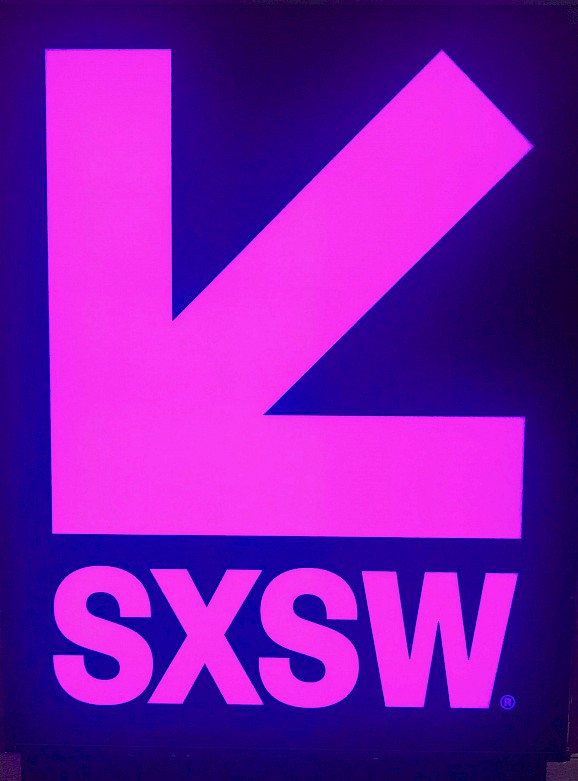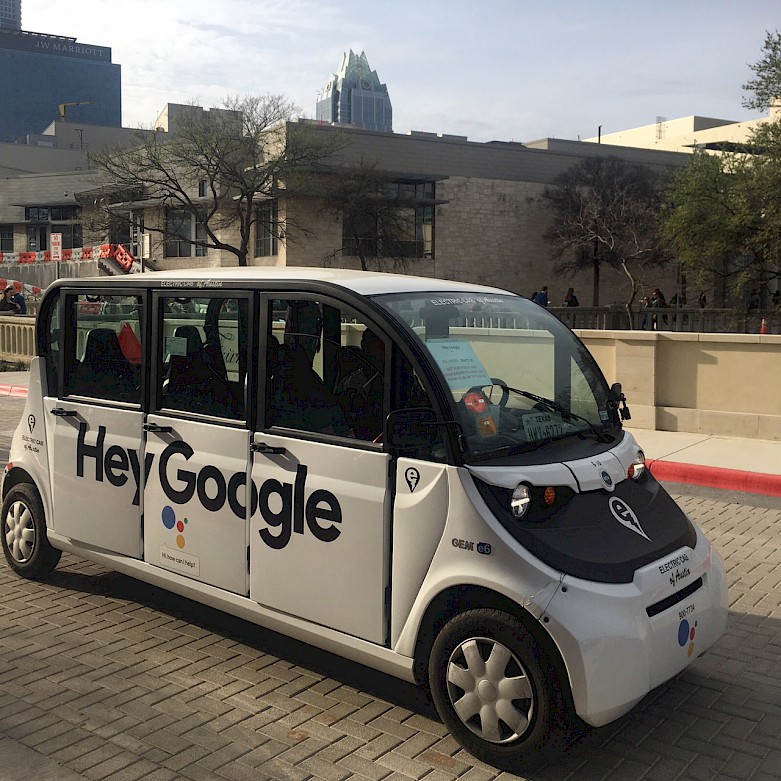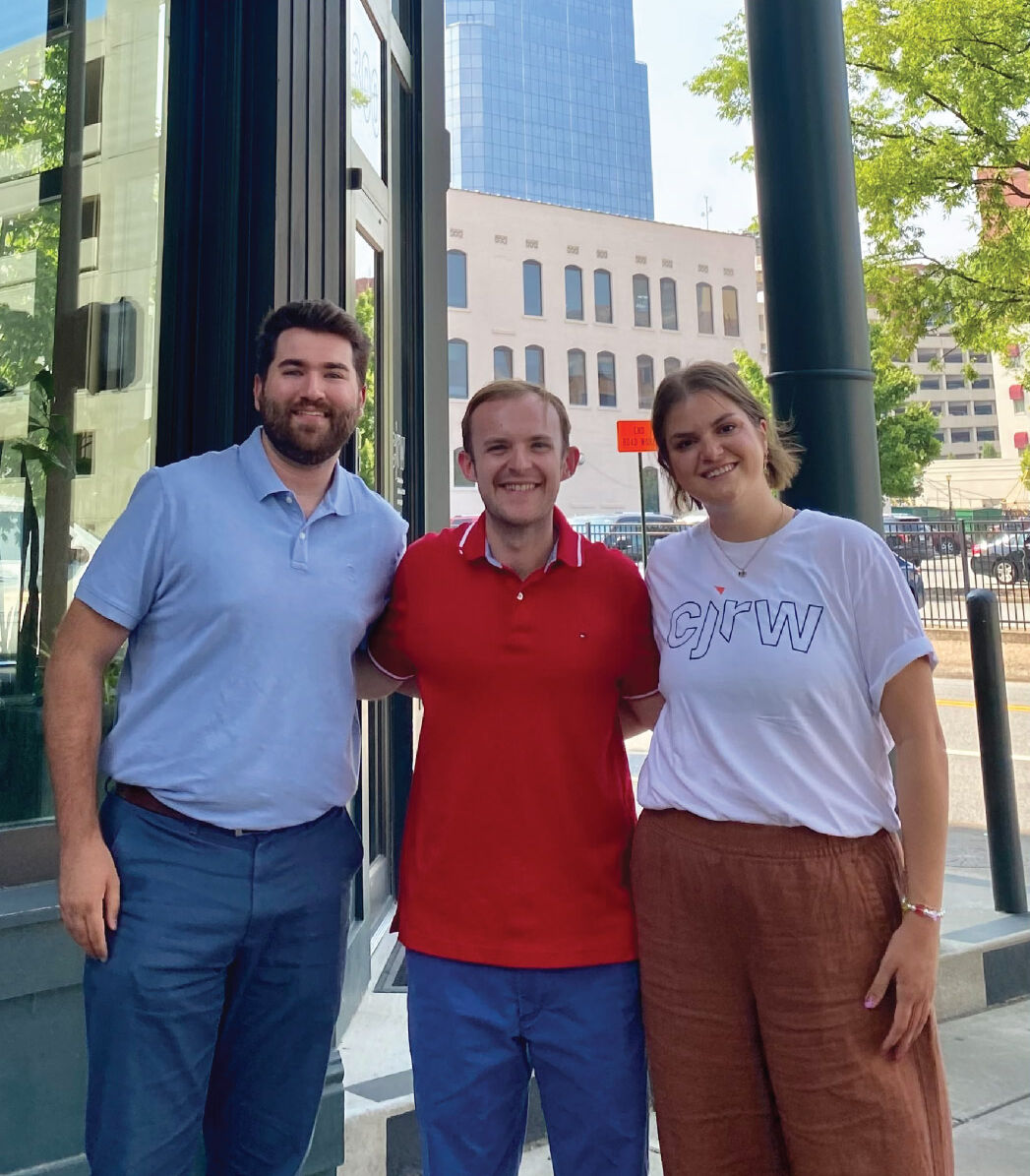As a general rule, if Elon Musk is in the room, you’re in the right place. But we already knew that. It’s our second day in Austin, and some of the biggest names on (and off) the planet are on hand to share their views on the present and visions for the future. But, as it turns out, the best thing about surprise celebrities is how they draw the crowds away from some really amazing sessions. So, satisfied with passing Elon on the sidewalk and staring for a few seconds, we decided to livestream the main event and take advantage of the short lines for everything else. As expected, the second day of SXSW was thought-provoking, inspiring, and a little scary.

How to Tell a Six-Second Story
People have short attention spans. Blame the internet. To them, 30 seconds is too long. They want quick punchlines. Then more Handmaid’s Tale. Something punchy and easy to remember. You’ve got six seconds to get them. Go! In case you were bored with the challenge of distilling your brand in 30 seconds, welcome to the world of short-form video, or as we in the social media trade like to call it, video. Finding placement in the brief pauses in sporting events, the six-second video has officially made its way into traditional media and “gone mainstream.” Now what?
In a filled-to-capacity Austin ballroom, a panel of experts weighed in on what is working so far in the storytelling sprint. (Spoiler alert: it’s more like a relay.) Composing the panel was Tanya Dua of Business Insider, Marwan Soghaier from Steelhouse, Janice Suter from GSD&M, and Green Chef social guru Geoff White. Moderating the session, Dua drove the panel to get into the details of what is giving the six-second video a sudden burst of popularity and new purpose in the grand scheme of brand marketing. There’s real long-term gain in the new wave of short-form videos if brands get their timing right.
The first step to making persuasive six-second videos is understanding what makes really short videos different from, say, your standard 30-second television spot. The most profound difference is also the most obvious. Short videos are cheaper, both to produce and to place. The effect is that a new niche on television (and an existing niche on social media)—the six-second ad spot—is more accessible to brands with smaller budgets. Put another way, if you’re clever with it, here’s a chance to get your foot in the door of a venue once occupied exclusively by major brands with cringeworthy budgets.
There is also a fundamental difference in what you can communicate in six seconds. This is the line being pushed right now by content creators. Think about it. Can you make someone laugh in a six-second video? Yes, or the internet wouldn’t exist as we know it. But, could you make someone cry? Maybe, if you are a certain kind of cause with a certain kind of content. For most brands, any emotional response whatsoever to a six-second video is a notable achievement. The key takeaway is to know your limits and create content accordingly. Don’t try to do too much. Resist the temptation to explain everything and learn to break your message down.
The strength of the six-second video (or 3–5 second video or animated .gif) is also its weakness. Short-form video for most brands is not a substitute for longer videos. Panelist Geoff White offered the best insight of the discussion with this point. Short-form videos should be “used as an additive.” Can you tell a story in six seconds? Yes, but not the whole story at once, and you shouldn’t try. A better strategy is to tell a story sequentially and in tandem with other storytelling formats, all working together to tell your overall brand story. So, rather than diluting content, short videos are another tool for enriching your content as a whole.

Reading Signals: The New Segmentation
With 2 billion people on Facebook, we have a unique look at shopper signals along the path to conversion. And as we segment by signals, the full breadth of each unique consumer journey emerges. For Direct Response marketers looking to move shoppers from the intent to purchase, these signals matter. Helen Crossley, Head of Audience Insights at Facebook and Yini Guo, a Consumer Insights Analyst at Facebook, walked us through a recent study conducted by Facebook to illustrate the online path to purchase experience more clearly.
The case study looked at various signals—“first day on brand site,” “number of days on brand site,” “number of pages viewed each day,” number of “add-to-cart actions” and purchase data gathered using the Facebook pixel—to build a segmentation of 1.6 million people who purchased from the specialty retail category. They were able to create six groups of shoppers based on their collective behaviors. Facebook determined very specific characteristics of each segment to help businesses think about how different customers are experiencing the path-to-purchase funnel and how to serve them valuable content along the way.
The segments that came out of the study were Shopping Mavens (those who spent the most time online shopping), Informed Mobilizers (those who purchased mostly on mobile devices), Fashion Enthusiasts (specifically focused on fashion), Social Savvies (those who mostly end up on the site from social media), Opportunistic Shoppers (those looking specifically for discounts and sales) and Online Reluctants (who prefer shopping offline). Through examination of how each segment moves through the funnel, Facebook determined some key points in each path that are optimal to serve ads that incentivize action.

Brand Personality and Business Growth
As a company grows, it’s easy to lose the personality and humanity that your customers first connected with. So how do you keep that sense of soul alive in a tech world where brands’ relationships with customers are in constant flux? Droga5 and MailChimp are successful, cutting-edge companies who have built business by helping clients tell their stories. Jonny Bauer from Droga5 and Tom Klein from MailChimp discussed how they keep things authentic and original for their clients through a case study featuring a hugely unique and successful campaign for MailChimp created in collaboration with Droga5.
These two industry thought leaders came together to create this offbeat campaign for MailChimp:https://droga5.com/work/did-you-mean-mailchimp/. The campaign was dreamed up as a take on the now infamous “Mailcrimp” Serial podcast ad. The team landed on six different iterations of the MailChimp name and created a highly visual, sticky narrative around each one. The stories were distributed along many different avenues based on the content and industry of the made up industries. For example, NailChamp mobilized some of the top influencers in nail art to participate in a fictional nail art competition that fans could vote on— all run on social media and a fake website. This cheeky campaign collectively gained millions of impressions.
Klein and Bauer discussed the agency-brand relationship while working on this project, as well as the importance of collaboration in creating memorable and meaningful experiences. From the brand side, Klein expressed the importance of creating something that was true to the inherent culture and personality of MailChimp. As an agency, Bauer stressed the importance of listening and staying true to the goals of your client. Thinking outside the norm and having the freedom to experiment are also key in balancing the partnership and fostering an overall relationship based on collaboration. The result, he says will always result in something more successful.

Tech Trends 2018
The one thing everyone who comes to SXSW wants to know is what’s next in tech? Futurist Amy Webb, professor at NYU Stern School of Business and founder of the Future Today Institute, released her 11th annual Tech Trends Report that provides a data-driven analysis for the emerging tech trends that need to be on everyone’s radar in 2018. The full report identifies 225 emerging tech trends across 20 industries, but she boiled it down to a few that will probably blow your mind.
The challenge for 2018 is to distinguish between what is a trend from what is trendy. Real trends share four characteristics. They are driven by basic human needs. They are timely but persist over long periods. They evolve as they persist. And, most intriguing, they materialize as a series of unconnectable dots which begin as weak signals.
Before we unveil the first key finding, remember how unbelievable it was to imagine that all the technology in a Discman, a digital camera, a portable DVD player, and a laptop would all exist within one piece of technology that fits in your pocket. Twenty years ago, we all would have laughed at the idea of that being a reality.
Today, though, new tech is bubbling up and smartphones haven’t really gotten much smarter over the last few years. That’s why Webb predicts that 2018 will be the beginning of the end of smartphones. Read again and breathe. If you’re under 21, consult a physician. Insane, right? Almost as insane as having a phone with a camera in it in the first place.
The fact is, smartphone sales are dropping year over year—maybe because we aren’t all upgrading our phones at the rapid pace we once did because smartphone users are only seeing incremental benefits when a new device launches. Replacing your precious smartphone may be impossible to imagine, but digital voice assistants are already ubiquitous. Webb predicts that within 10 years, there will be a greater need for non-visual user interface. Instead, conversational interfaces will become the norm with 50% of interactions done by voice in 2021.
The next couple of trends to note are voiceprints and faceprints. Not unlike fingerprints, we all have a unique voice. Your unique voiceprint can divulge your health, age, emotional state and in some cases also reveal what size room you’re in and how many people are in it with you. Creepy? Combining voiceprint with new AI, biometric scanning will subside over the next decade, and we will have a conversation with a digital assistant instead of entering passwords.
Faceprints take into account not just what your face looks like on the outside, but also considers deep perceptual mapping, like capillaries and unique characteristics under the skin. Alibaba has already debuted “smile to pay” technology in China using this facial recognition technology.
With all that said, AI is already here. It just didn’t show up how we expected it to. We use it every day and have for years in artificial narrow intelligence (ANI) that performs simple tasks. Anti-lock brakes, spam filters, and airline security are some examples of ANI. AI is not a trend itself, but when machines begin to recognize patterns, these systems will learn without humans.
Google’s AI can now create machine-learning code better than the researchers who created it. The big 9 companies—Tencent, Baidu, Alibaba, Amazon, Google, Microsoft, Apple, Facebook and IBM—control the future of the next era of computing. These companies are constantly mining and profiting from our data. Over next 20 years, human data will be a valuable natural resource. Although not everyone agrees with how this data should be used, they agree on this. Data is the new oil.
The Takeaway from SXSW Day 2
As promised, the second day at SXSW was visionary. The challenge is on for content creators and brands to redefine and remake the online experience, discovering new niches along the way and finding new ways to play a role there. We’re also reminded that “interactive” is more than a digital concept. It’s a deeply human one. Content creation, client relationships, and tech adoption are second nature when your first priority is human nature. People want to be more connected in more meaningful and natural ways. They’re going to have it either way. The question is which brands can advance quickly and in profound ways to take the lead in a different kind of race. Let’s call it human.


